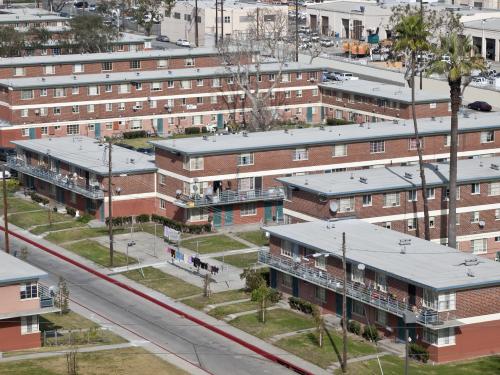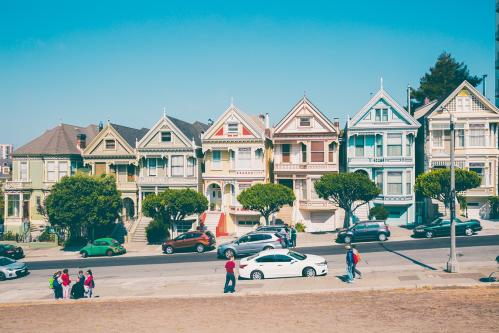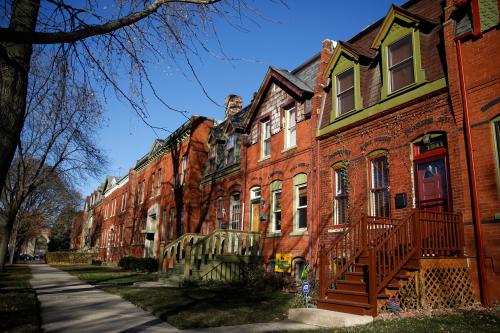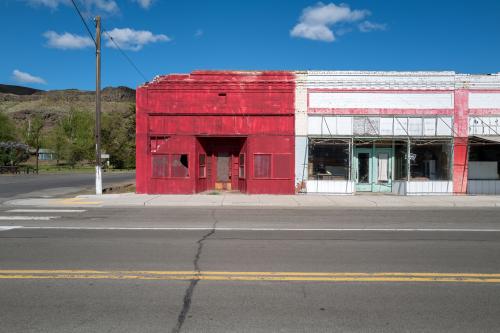By far the largest housing subsidy in the U.S. is the mortgage interest deduction (MID), which allows homeowners to deduct interest paid on their home loans from income subject to federal income taxes. A key component of the Tax Cuts and Job Acts proposed recently by House Republicans would cap the MID at $500,000, down from the current level of $1,000,000. Nationally, this policy change would affect a small share of homeowners: the median house value in the U.S., for instance, is $205,000, according to 2016 American Community Survey data. Estimates suggest that around three to six percent of mortgages are above $500,000. But, the impacts in some metropolitan areas could be much larger, shown in the map below.

The greatest potential impacts would be on metros in coastal California and Hawaii, where more than half of homes are valued above $625,000. In New York City, Washington D.C., and Boulder, Colo., more than one-quarter of houses could be affected. The impacts outside of large metropolitan areas would likely be quite small: in two micropolitan areas (Kapaa, Hawaii and Key West, Fla.), more than 25 percent of homes are above the price threshold. Prices in rural areas are lower still.
Central cities tend to have lower homeownership rates than suburbs, so proportionately fewer residents benefit from the MID currently
A change in the MID could affect prospective homeowners in both central cities and suburbs. Central cities tend to have lower homeownership rates than suburbs, so proportionately fewer residents benefit from the MID currently. Table 1 shows the median and upper quartile housing values for three of the largest metro areas likely to be affected by the reduced MID cap.
On average, Manhattan, San Francisco County, and the District of Columbia have higher housing values than suburban counties in their respective metro areas. In the New York metro area, there are five counties besides Manhattan where the upper quartile exceeds $625,000: Brooklyn, Queens, Westchester, and Nassau Counties in New York, plus Bergen County in New Jersey. In the San Francisco Bay Area, the upper quartile of all four counties exceeds $625,000. In the D.C. metro area, the upper quartile of housing values exceed $625,000 in one suburban Maryland county (Montgomery), three suburban Virginia counties (Arlington, Fairfax, and Loudon), and three independent cities (Alexandria, Falls Church, and Fairfax City).
Table 1: Reduced MID cap could affect central cities and suburbs
| Metro area | Median value ($) | Upper quartile value ($) |
| Notes: Calculations using ACS 2015 5-year estimates. Median and upper quartiles for combined counties are weighted by number of owner-occupied housing units. Washington, D.C. counties includes independent cities in Virginia. Bolded cells show values over $625,000. | ||
| New York | ||
| Manhattan | 848,700 | 1,635,400 |
| Other NYC boroughs | 478,952 | 671,903 |
| Other counties | 388,843 | 549,209 |
| San Francisco | ||
| San Francisco County | 799,600 | 1,103,100 |
| Other counties | 647,205 | 926,947 |
| Washington D.C. | ||
| District of Columbia | 475,800 | 771,900 |
| Other counties | 418,077 | 592,883 |
The impacts of any changes to the MID will depend on details of policy design and speed of implementation
The impacts of any changes to the MID will depend on details of policy design and speed of implementation. Housing economists have long argued that the mortgage interest deduction primarily benefits higher-income households, and is not well targeted to first-time homebuyers. However, most proposed revisions recommend implementing any changes to the MID gradually to avoid causing sudden drops in housing values.







Commentary
Which metro areas would be hit hardest in the latest tax plan by capping the mortgage interest deduction?
November 8, 2017